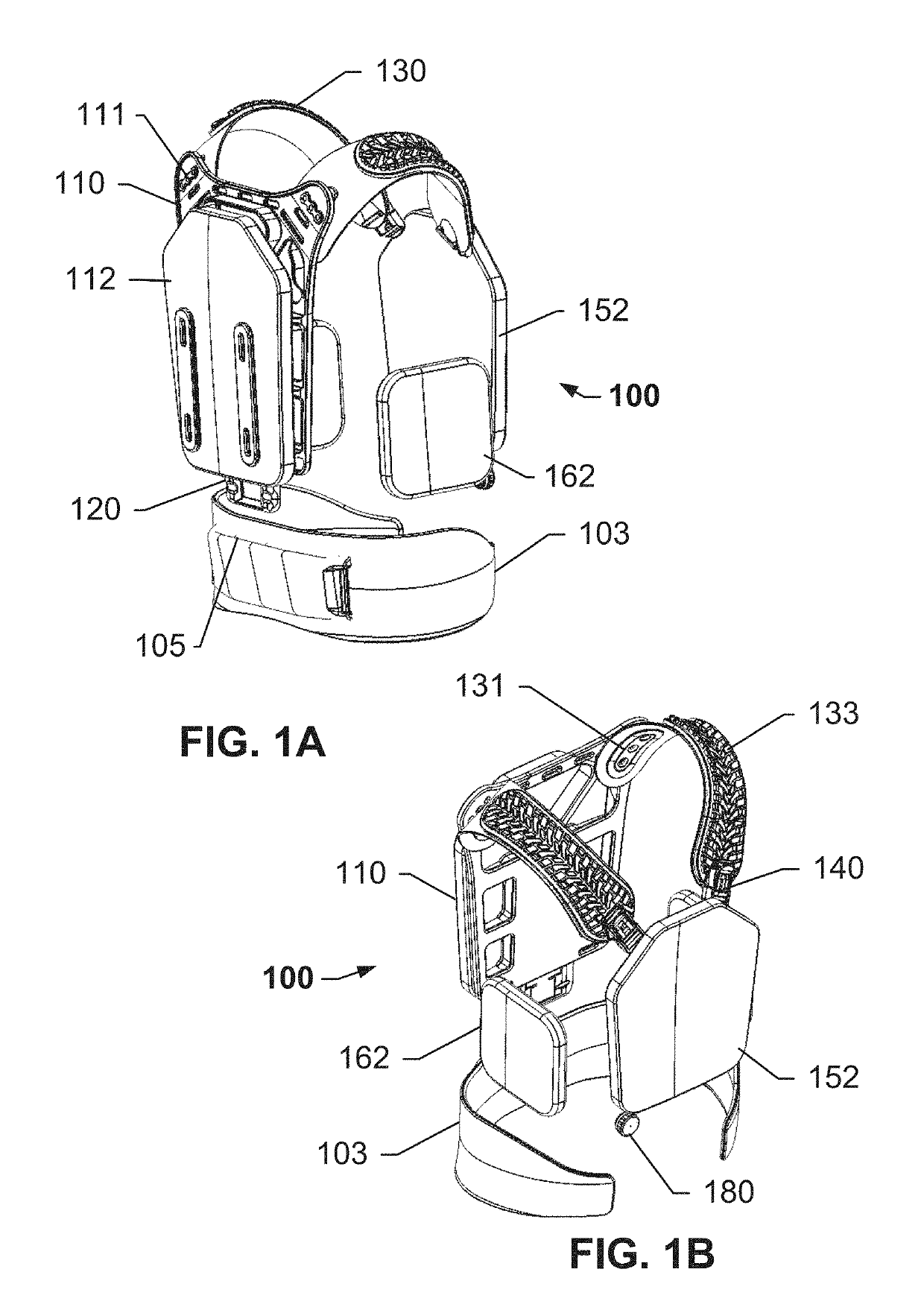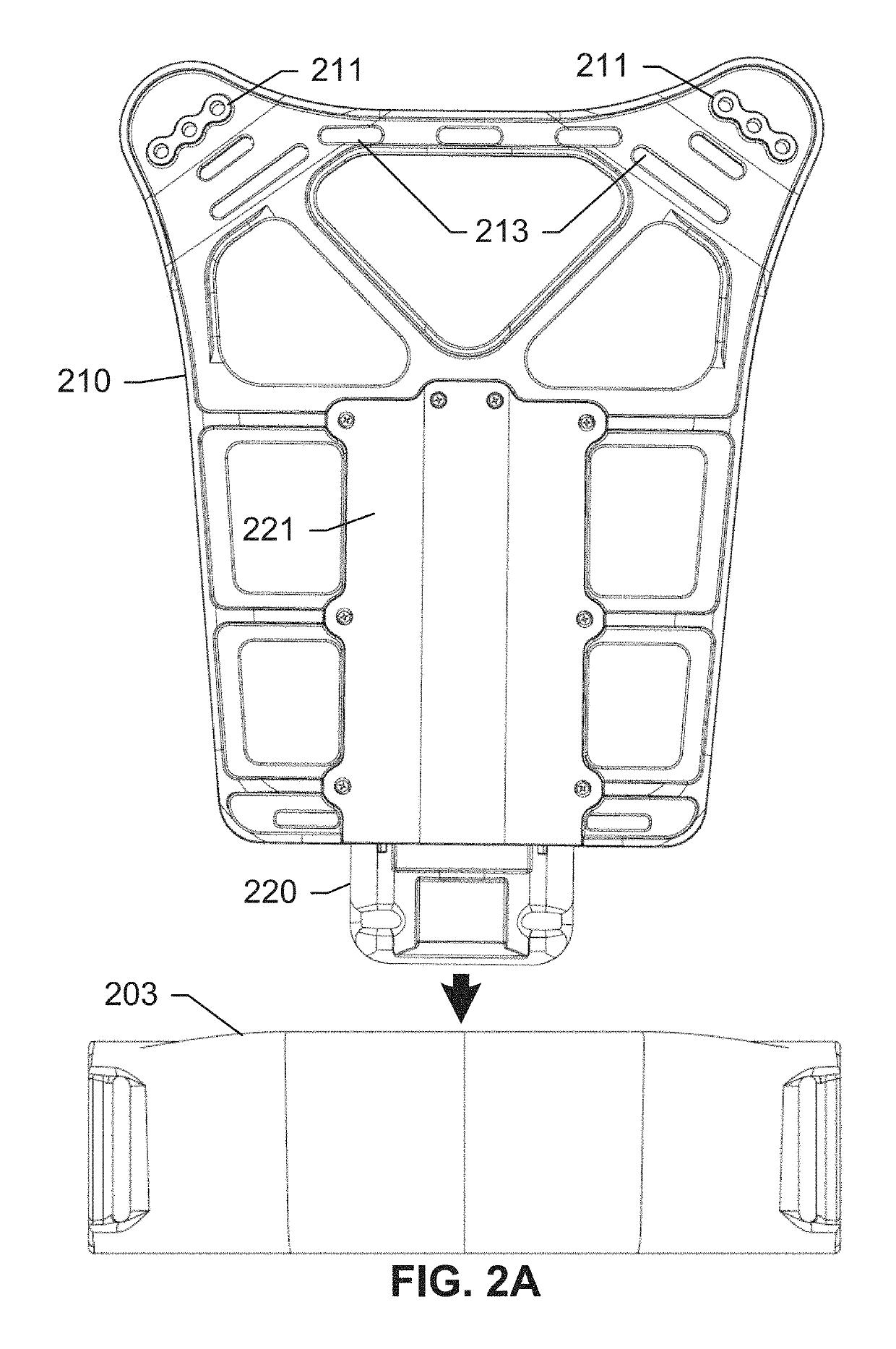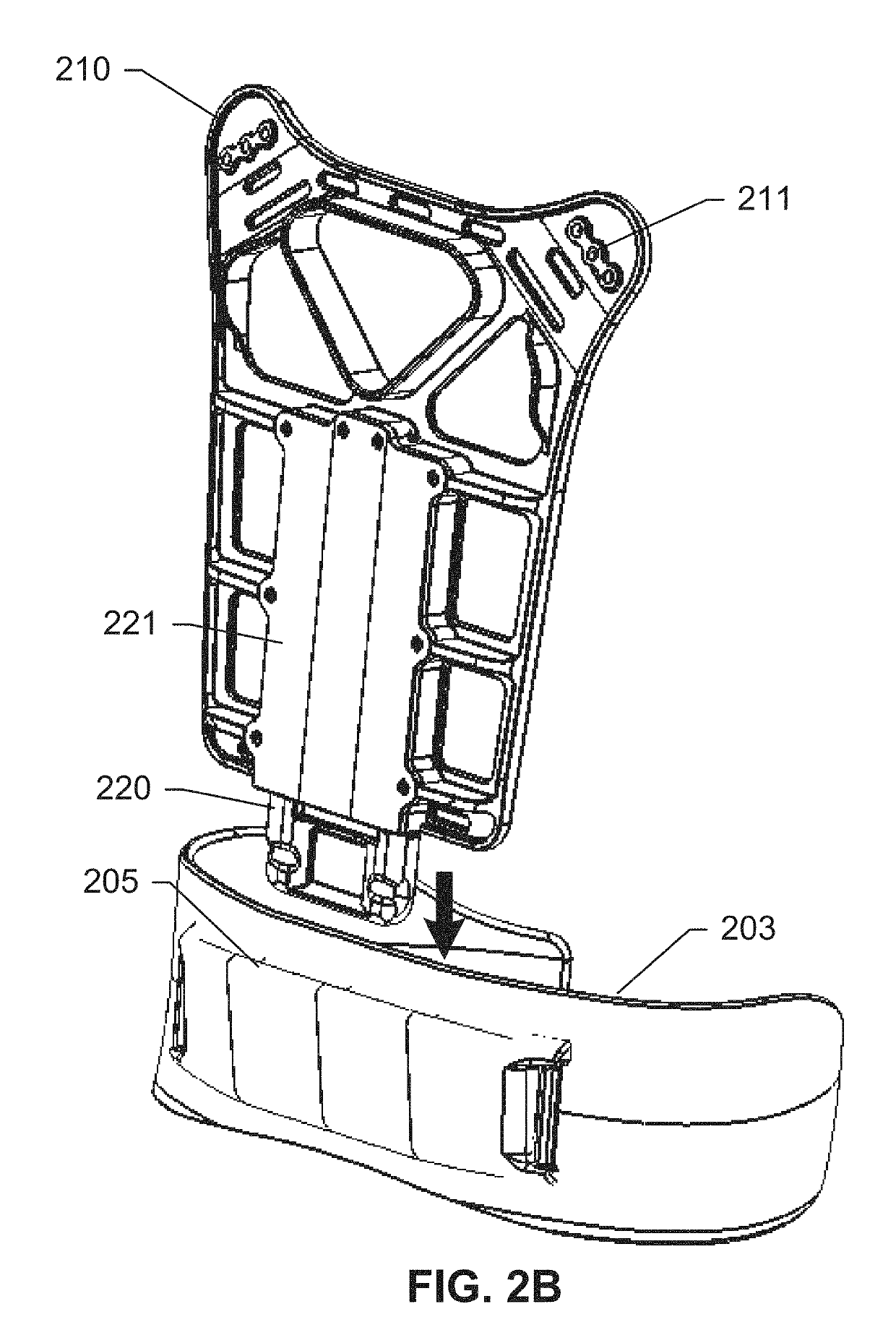Tactical load-bearing vest
a load-bearing vest and tactical technology, applied in the field of load-bearing vests, can solve the problems of accelerating fatigue rate, heavy burden on the shoulders of users, and excessive load on users during sustained battles, and achieve the effect of convenient dislocation of the ves
- Summary
- Abstract
- Description
- Claims
- Application Information
AI Technical Summary
Benefits of technology
Problems solved by technology
Method used
Image
Examples
Embodiment Construction
[0024]The following detailed description references specific embodiments of the subject disclosure and accompanying figures, including the respective best modes for carrying out each embodiment. It shall be understood that these illustrations are by way of example and not by way of limitation.
[0025]FIGS. 1A and 1B show views of an assembled vest 100 and a supporting waist belt 103, according to an exemplary embodiment of the subject disclosure. With reference to FIG. 1A, an upper vest 100 comprises a plurality of overlapping panels including a rigid back frame 110 coupled to a vertical spine extension 120, and a supporting waist belt 103 comprising a cradle 105 for receiving the vertical spine extension 120. Spine extension 120 may be raised or retracted when not in use, and lowered or extended until it makes contact with cradle 105 of supporting belt 103. In a lowered state, spine extension 120 ergonomically transfers load from the shoulder panels 130 to supporting belt 103 via the...
PUM
 Login to View More
Login to View More Abstract
Description
Claims
Application Information
 Login to View More
Login to View More - R&D
- Intellectual Property
- Life Sciences
- Materials
- Tech Scout
- Unparalleled Data Quality
- Higher Quality Content
- 60% Fewer Hallucinations
Browse by: Latest US Patents, China's latest patents, Technical Efficacy Thesaurus, Application Domain, Technology Topic, Popular Technical Reports.
© 2025 PatSnap. All rights reserved.Legal|Privacy policy|Modern Slavery Act Transparency Statement|Sitemap|About US| Contact US: help@patsnap.com



